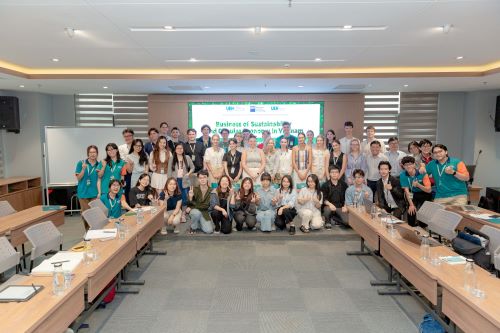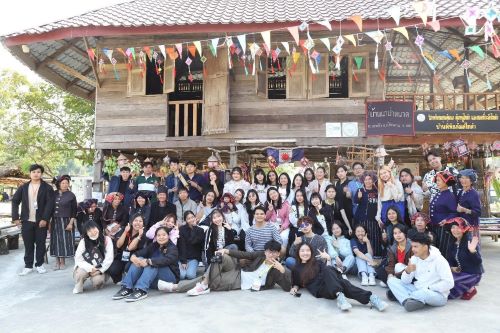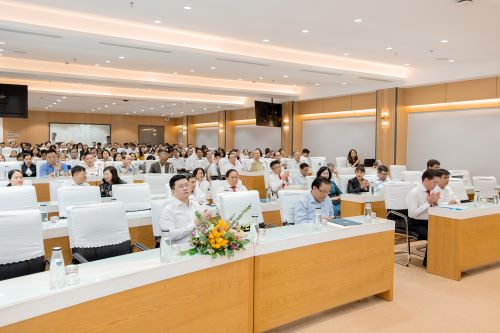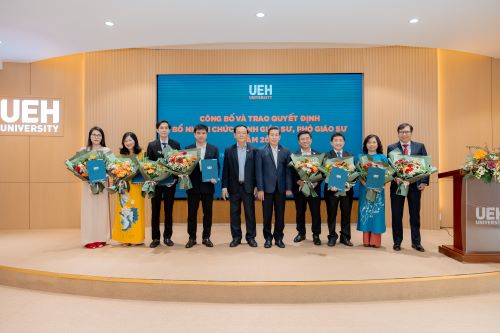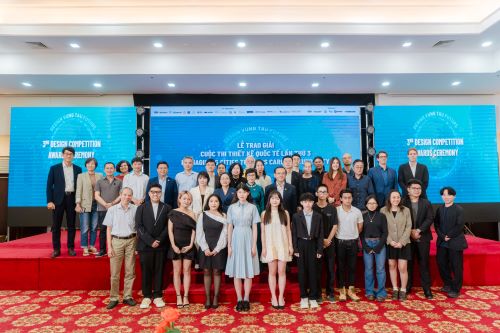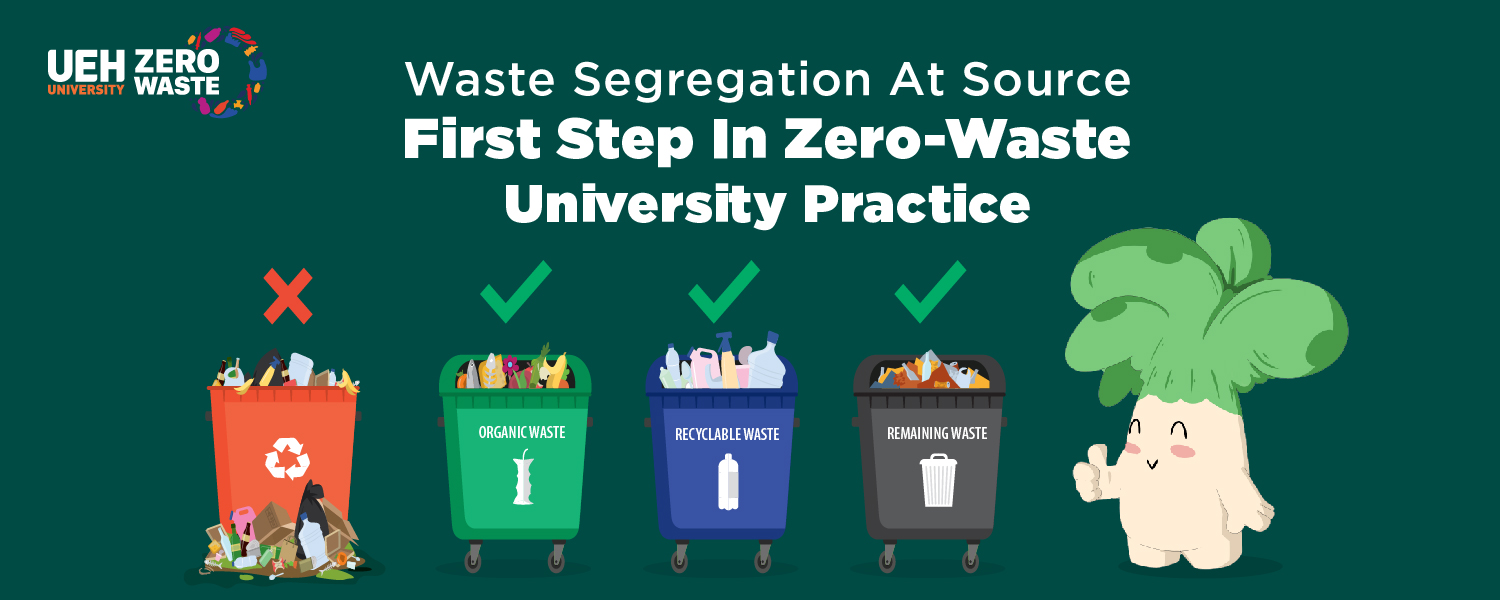
UEH Zero-Waste Campus: Waste Segregation at Source –First Step in Zero-Waste University Practice
Waste separation (waste sorting) at source, currently, is an extremely important and urgent task that needs to be conducted in households, businesses, schools and so on in order to reduce the amount of waste going to urban areas, to process waste in a systematic manner with more responsibility and to avoid causing environmental pollution. One of the main goals of “UEH – Zero Waste Campus” Living Lab Project is to know how to properly classify waste at source and apply 3R model (Reduce – Reuse – Recycle) in sustainable waste management, bringing back the school and life environment greener and cleaner.
.jpg)
Why is waste sorting at source a must?
Waste sorting at source is of great importance in waste management, contributing to minimizing the risk of spreading infectious agents, toxic and dangerous factors. Waste separation at source is the separation at generation points, the different materials found in solid waste in order to promote recycling, to reuse resources and to reduce the amount of waste remaining for collection and treatment. Separating waste at source is a practical task that each citizen should perform to join hands to protect the environment. 04 reasons as follows explain the reason why segregate waste at source is being an absolute must:
First, sorting waste at source contributes to saving resources, bringing benefits to businesses, business units, households and so on from making use of recycled scrap and self-processed compost.
Second, sorting waste at source contributes to raising public awareness regarding the protection and rational use of resources and the environment.
Third, sorting waste at the source contributes to reducing the total amount of waste discharged into the environment by the community as well as to save costs of collection, transportation and treatment.
Last but not least, sorting waste at source will contribute to solving the current dilemma that countries are facing, which is environmental pollution.
How should waste be classified?
In accordance with the regulations of Ministry of Natural Resources and Environment, currently at Ho Chi Minh City, waste is classified into 3 main types:
Organic waste: Being easily decomposed in natural conditions, for example: damaged/rotten leftover food; vegetables and fruits; all kinds of tea, coffee, sugarcane bagasse and so om; paper, fiber factory, fiber from paper factory; waste from starch processing villages; all waste from agriculture, domestic waste and so on.
Organic waste can be composted to create fertilizer for plant care right at the unit, at home or transported to a centralized processing plant into compost fertilizer, provided that it is necessary to have storage devices of suitable sizes for the storage time and to ensure that there is no littering, water leakage to ensure urban aesthetics.
Recyclable waste: Being as used waste with recyclability, listing as: bottles, glass jars, drums, containers made from plastic; all kinds of plastic, soft plastic packaging; paper box, writing paper, printing paper, carton board; Newspapers, magazines, books, tables; Pots, pans and saucepans made of broken metal; All scraps of iron, steel, aluminum, stainless steel, aerosols and so on. They will be thoroughly sorted and sold back to a recycling facility or sent to recycling plants to form raw materials or new products for sale in the market to meet the consumers’ needs.
Remaining waste: Being the type of waste that can be neither used nor recycled. The only thing to do with them is to bring them to landfills for burial.
What is more, hazardous waste, besides the above types of garbage, will be collected, treated, and transported separately. Hazardous waste is all waste containing compounds with dangerous properties; listing as: flammable, explosive, toxic, toxic, infectious, radioactive, stinky, corrosive and so on potentially harmful to human health and the environment. Hazardous waste is everywhere, in every field: healthcare, manufacturing industry, commercial industry or even in agriculture, all of which produce hazardous by-products. Some types of hazardous waste can be listed as: pesticides, vim cleaners; batteries, accumulators, mini gas cylinders; petrol bottles and jars; electrical equipment (breakers, wires), electronic components, light bulbs, printing ink; needles, medical instruments, mercury thermometers and so on. These hazardous wastes are handled in accordance with legal requirements to protect the environment and prevent from coming into contact. Nowadays, hazardous waste, along with scientific and technical progress, can be treated by different methods: biological method, chemical method and physicochemical method and so on. This hazardous waste needs to be collected separately in a safe place in all containers that are tightly covered and labeled with a hazard warning.
Waste separation at UEH
In accordance with waste and scrap management Decree issued by State government, UEH has established “Regulations on non-waste university practice at University of Economics Ho Chi Minh City” Set. The regulation aims to classify garbage into 03 main categories (organic waste, recyclable waste and residual waste); to practice 3R models (Reduce, Reuse, Recycle); to clarify stakeholders’ responsibilities towards zero-waste university practice process.
Within UEHZW Living Lab Project framework, waste classification approach is implemented in details by UEH, with detailed dissection of each specific case so that UEHer community can thoroughly implement waste separation at source. A lot of specific contexts are introduced to make garbage classification closer and possible. These contexts are dependent upon garbage audit outcomes at Nguyen Van Linh Campus in April 2021.
(Further information is viewed )
.jpg)
Styrofoam food box with plastic spoon
.jpg)
A cup of half-drunk pearl milk tea with a straw
.jpg)
Vietnamese-style bread (including foam bag & bread wrapper)
.jpg)
Cosmetic/Souvenir carton boxes ordered online (Tiki, Shopee, ...)
.jpg)
Medical mask
.jpg)
Torn-off paper from booklet
.jpg)
Soft drink bottle
.jpg)
Finished paper milk box
UEH, in addition to additional documents and regulations, distributes trash cans with an appropriate amount around UEH campus, each of which is attached with its own symbol in front to distinguish and motivate students to actively sort garbage at source properly; The location of trash cans is also uploaded to Wayfinding system for learners, lecturers and officials to easily locate. UEH is also actively connecting with stakeholders, especially the unit collecting specific types of recyclable waste, the unit recycling the waste into useful products, and the organic waste treatment unit building a closed waste management loop. UEH does hope that UEH learners, lecturers, officials and partners will coordinate with each other in separating waste at source and practicing a Zero-waste University.
Collected and Edited: Department of Marketing – Communication
Professional consultancy: Institute of Smart Cities & Management (ISCM), Economy & Environment Partnership for Southeast Asia (EEPSEA)


